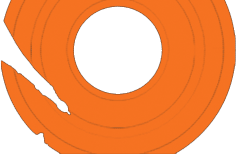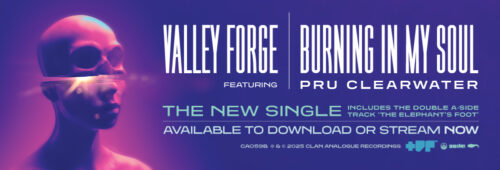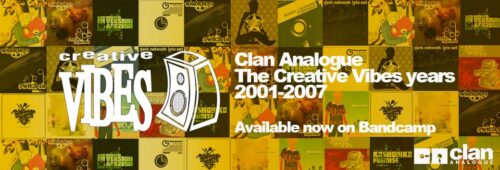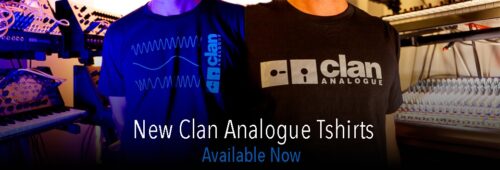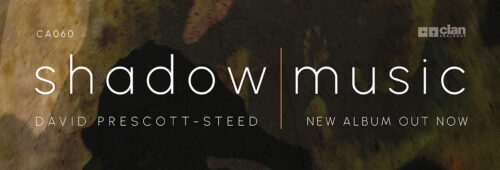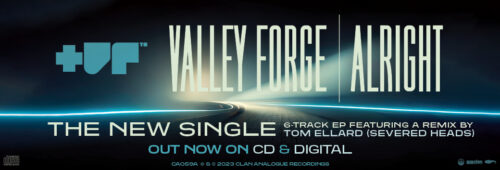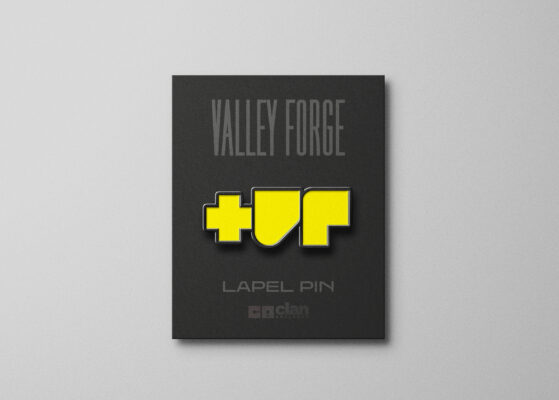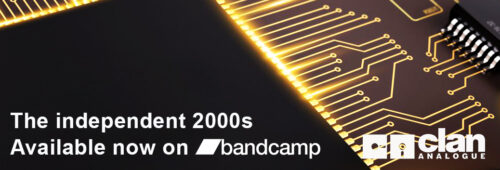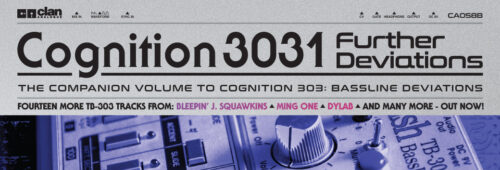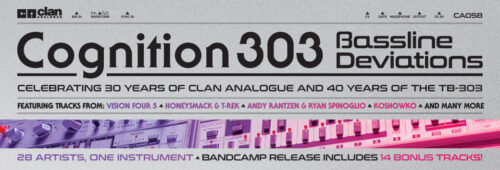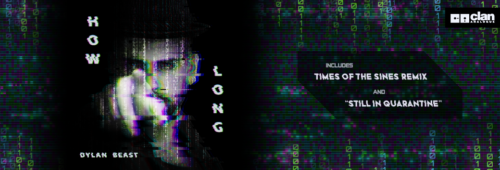After a brush with late-90s mainstream music industry success via a deal with Festival Records, Clan Analogue felt the need to re-establish its cutting-edge credentials when the 21st century rolled around. So in 2001 a new distribution deal was signed with groovy indie Sydney label Creative Vibes, home of funky and hip artists including Gotye, Spoonbill and The Bird. For the following six years Clan Analogue released a series of albums which are amongst the most popular and enduring in its back catalogue.
Clan Analogue have now made available for the first time on Bandcamp this collection of much-loved releases, spanning the years from 2001 to 2007. Download in the format of your choice or take a listen via streaming and enjoy the sounds of Clan Analogue’s Creative Vibes years!
Solid Gold: Cognition Four (CA028) was the last release compiled by Clan Analogue’s then Label Manager Gordon Finlayson before he retired from the independent electronic music scene to become a jet-setting intellectual property lawyer. As Gordon had a plane to catch some of the proofreading on the artwork was a bit rushed, so if you have one of the original CDs you may spot some amusing typos. Other than that, this is classic early 2000s electroclash with some legendary tracks by Artificial & DJ Toupee, Andy Rantzen & General Electrik, B(if)tek, Itch-E & Scratch-E, Bleepin’ J Squawkins, and more. Still sounds great in the clubs!
An Englishman In Ibiza (CA029) by Disco Stu somehow became Clan Analogue’s closest thing to a commercial hit single, getting high rotation airplay on Triple-J and becoming the station’s most-requested song for a fortnight or so. Disco Stu was the alter-ego for experimental sounds artist Ian Andrews and this was the follow-up to the first Disco Stu album Adult Themes which we had released a few years earlier. The track “An Englishman in Ibiza” had actually already been released by Nicole Skeltys on her Stoner Classix label but it took the Clan Analogue and Creative Vibes partnership to get this some wider attention. We don’t question the tastes of the record-buying public and were happy for this rare moment of mainstream popularity!
Habitat: Environmental Sound Research (CA030) was originally intended as the follow-up to Clan Analogue’s Aphelion One release of the late 90s. Exploring the ambient and abstract areas of Clan Analogue’s artistic output this fairly leftfield release from 2002 was nonetheless nominated for Best Compilation in the Australian Dance Music Awards. Some of the notable artists included were Sydney sound artists Kazumichi Grime and Shannon O’Neil, Adelaide’s indietronica duo Pretty Boy Crossover, and Melbourne’s legendary industrial psychedelic rock group Clowns Smiling Backwards.
During this era we usually paired compilation albums with a complementary artist release, so in 2002 we also released Any Number Can Play (CA031) from Adelaide indietronica duo Pretty Boy Crossover, a collaboration between Jason Sweeney and Cailan Burns. This was a mini-album with four tracks and four accompanying remixes by some interesting leftfield artists including Kazumichi Grime.
Defocus: Low Res Productions (CA032) continued the exploration of electronic music styles quite removed from club and rave cultures. Released in 2003, this compilation explored lo-fi, glitch and indietronica styles, so was a fairly diverse collection but certainly an interesting one! Some notable artists featured include Deepchild, Dark Network and Two4K.
Late Set (CA033) from Dark Network is one of the most-loved releases in the Clan Analogue catalogue, continuing to attract new fans with its chilled hypnotic grooves made with classic analogue gear. A mainstay of Clan Analogue’s chill-out rooms Dark Network often played lengthy sets in the late hours and they go deep into that sonic territory with this album.
Clan Analogue returned to the dancefloor with the compilation Doppler Shift: Electro Selections (CA034) released in 2004, but with a cheeky 80s synth-pop influence coming to the fore. New Clan Analogue artists Valley Forge and Lunar Module made their first appearances here, joining some great long-time Clan contributors such as Itch-E & Scratch-E and General Electrik.
After they won an inaugural B(if)tek WINK Award Clan Analogue recognised Sydney electro duo Bleepin’ J Squawkins as an act to watch. In 2004 we released their debut album Floppydisco (CA035), featuring a batch of short and sharp electro-pop tunes. “Minerva Moog part 1” even made it onto Triple J’s daytime playlists with its catchy electro groove and enigmatic narrative.
By 2006 the age of iTunes and legal downloads was upon us, so Clan Analogue started releasing singles and shorter EPs along with compilation albums and artist releases to take advantage of this new-found format freedom. The first such release was the single Over & Over Dub (CA036A) by Dsico, an advance track from the forthcoming compilation Clan Analogue In Version. The single included a catchy post-punk-flavoured “B-side” called “Stone’s Throw”.
Clan Analogue In Version: Dub Selections (CA036) is one of the rare releases in Clan Analogue’s catalogue which actually includes the name of the collective (although it is often shortened to just In Version). Executive Producer Scot McPhee (Victor X-Ray) sent out MIDI files of classic reggae basslines that artists could use to develop their dub tracks, in classic soundsystem style. The result is a unique combination of dub innovation and classic reggae tradition which sounds just as contemporary today. In Version includes some great contributions from Andy Rantzen, Winduptoys, Kazumichi Grime and others.
Originally put together as a promo collection to try to secure a distribution deal with a Hong Kong label, Inverted: Further Dub Selections (CA036B) became a limited edition companion CD for those who bought Clan Analogue In Version in physical format. The EP was another dub release, however these were more dub-influenced tracks rather than purist in their style, with artists mixing dub elements into their music in their own way.
An advance single in the leadup to the forthcoming release of the Winduptoys album, Melbourne’s psychedelic dub duo released Switch On (CA037P) in 2006 with a bunch of alternative mixes and obscure rarities which brought their exotica influences to the fore.
The debut Winduptoys album Double Exposure (CA037) released in 2006 was Clan Analogue’s last release through Creative Vibes. An experimental electronic masterpiece, Double Exposure mixed elements of dub, psychedelia, exotica, industrial music, found sound and general sonic weirdness. Enjoy!
The Promise EP (CA036K) from KOshowKO was released in 2007 at the tail end of our time with Creative Vibes. KOshowKO’s track “Promise” had been included on the Clan Analogue In Version compilation and the EP collected this track along with a bunch of alternate mixes and remixes plus an otherwise unreleased “B-side”. Although CDs were pressed, the release emphasis was moving towards iTunes and other platforms for digital downloads by this stage.
101 Lock Groves (CA-LG101) was not a Creative Vibes release as it was released completely independently, however we include it here because it belongs in this era. This was originally a vinyl-only release coordinated by Nathan Elliot-Watson (Null Object) featuring 101 locked grooves by 28 different artists – very useful for some extra sonic spice in late night DJ sets! These loops have never before been available in non-physical format. We have made them available under a Creative Commons license so use as you will, although we would appreciate attribution please!
And finally, something that was never released at all. In 2002 Clan Analogue prepared to release the long-awaited debut album from Sydney industrial techno artist Null Object. But the abrasive qualities of Null Object’s uncompromising sound proved too much for the gentle ears at Creative Vibes and they didn’t want to release it. However while the “to release or not to release” debate was going on, one of the tracks was pressed onto a Creative Vibes vinyl promotional EP, which also included tracks by Disco Stu and Pretty Boy Crossover on the Clan Analogue side and some tracks from Sydney label Groovescooter on the other. If you have a copy of this rare release, count yourself lucky! In the meantime, enjoy this rediscovered hard industrial gem created with Null Object trademark vintage analogue gear and distortion aesthetic, the track “Stan Astad Is My Dad” which we are now releasing as CA03X.

